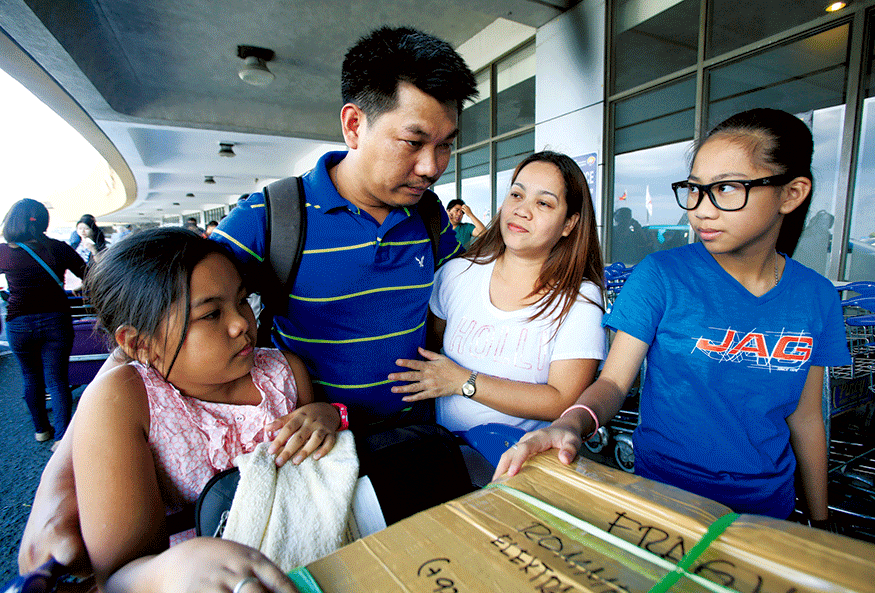
Strong, resilient and exceptional. These are the qualities that describe the abacá, a species of banana native to the Philippines. It also represents Filipinos’ best qualities, says Ambassador Grace Relucio Princesa, who’s also known as the Abacá Princess for her efforts to promote natural fibre from the plant, used to make fabric.
“The Philippines considers its relations with the UAE as one of the most important in the international community,” Princesa tells GN Focus. “The UAE is especially important because it has been considered as home by almost 600,000 Filipino expatriates. “It is the second destination of labour migrants from the Philippines — after Saudi Arabia — and has provided economic opportunities to Filipinos.”
That said, the ambassador is committed to helping Pinoys make the most of the financial opportunities here before reintegrating back home. Through the Pinoy Worldwide Initiative for Investment, Savings and Entrepreneurship (Wise), Princesa wants to expand financial literacy among Overseas Filipino Workers (OFWs), in order to help them break the cycle of migration that plagues many Filipino households. “We will be holding Pinoy Wise seminars very aggressively before I leave my post in October,” Princesa told Filipino leaders during last week’s 20th Migrant Workers Day, according to a Gulf News report.
“Let’s market our products and places and not our people any more; [we’ve marketed our people] enough. So if you have enough [financially], go home and enjoy the Philippines, but only if you are Pinoy Wise.”
Last week also saw the launch of The Essential OFW Guide to the UAE, aimed at helping Pinoys settle here. According to embassy data, Dubai has the largest Filipino community, at around 450,000, followed by Abu Dhabi and AI Ain. Some 60 per cent of the UAE’s Pinoy population are professionals, 25 per cent semi-skilled workers and 15 per cent unskilled.
These OFWs are mainly employed in the architecture, construction, cargo shipping, design, engineering, energy, information technology, marketing, medical, real estate, retail, telecommunication and tourism fields, and as domestic helpers.
“Cultural ties have also improved because of the large Filipino community in the UAE. While Filipinos have learned the traditions of their brothers and sisters in Islam, more Emiratis and other expatriate communities have been exposed to Filipino culture and cuisine,” says Princesa.
Those ties got a little firmer last month when Jollibee, considered Philippines’ largest fast-food company, opened at The Dubai Mall, joining other favourites such as Max’s Restaurant, Chowking and Barrio Fiesta. The UAE telecom operators have also recently introduced lower call costs to the Philippines, in partnerships with companies from the country.
Diplomacy
Diplomatic relations between the two countries have been strong over the past 35 years, since the embassy in Abu Dhabi opened on June 17, 1980. “Philippines-UAE relations have been mutually beneficial,” says Princesa.
It covers a broad spectrum, including politics, agriculture, labour, tax, aviation, trade and investment. International ties include cooperation as members of the International Renewable Energy Agency.
According to the latest data by the Philippine Trade and Investment Centre (PTIC) in Dubai, trade between the two nations reached $906.61 million (Dh3.3 b illion) between January and August 2014. Exports from the Philippines were $241.22 million, and imports stood at $665.39 million. No data is available for projected trade for this year.
The Philippines’ biggest exports are bananas, including plantains — fresh or dried — while it imports mainly petroleum and oils. Some of the industries showing the most potential include garments and textiles, fresh and processed food and beverages, especially organic products and halal foodstuff, health and wellness products, automotive parts and accessories, as well as wood and metal furniture. The embassy encourages UAE investors to look into manufacturing, agri-business and fishery, services, affordable housing, hospitals, energy, public infrastructure and logistics, and public-private partnership projects.
Tourism
Princesa says many Filipino travellers come to visit family and friends, but adds, “Dubai and Abu Dhabi, with their famous tourist spots, have also become popular tourist destinations for Filipino travellers who are exploring new destinations beyond South East Asia, East Asia and the US. “It is generally safe, and PAL [Philippine Airlines] and Cebu Pacific offer direct and promotional flights.”
While UAE nationals enjoy visa-free entry to the Philippines, the embassy issued around 1,500 visit visas last year. According to the Department of Tourism, 17,000 people from the UAE visited the Philippines last year, up from 10,488 in 2009.
According to the Centre for Aviation, the UAE takes the top two spots in flights between the Philippines and the Middle East, with 27,482 seats booked to Dubai International Airport in the first week of December, while Abu Dhabi registered 15,204 seats.


